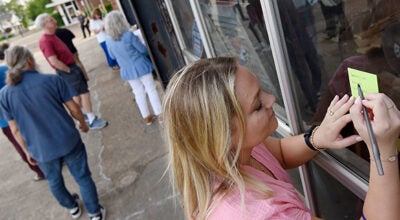Children’s home plants flowers for awareness
Published 12:03 am Monday, April 27, 2015
NATCHEZ — The Natchez Children’s Home planted new flowers Friday. They’re blue and are known to spin whenever a light breeze blows.
“We planted blue pinwheels to draw awareness to national child abuse awareness month,” said Glenda Wilson, director of the Children’s Advocacy Center at the Natchez Children’s Home.
According to the National Children’s Alliance, 1,839 children in Mississippi reported abuse in 2014.
To draw awareness to those figures, Wilson and other Children’s Home staff decided to stake pinwheels along the historic house’s outside entryway.
“April is just a month that someone nationally set aside, but I think we need to recognize that child abuse is very much alive,” Wilson said. “We need to do what we can to prevent children from having to go through abuse.”
Since establishing the Children’s Advocacy Center (CAC) at the Natchez Children’s Home in 2012, Wilson said she has seen, on average, seven to eight children a month.
“And that number is increasing,” she said.
The Natchez CAC is one of 777 centers throughout the country.
Through CAC services, children receive treatment from a multidisciplinary team. Children ages 3 to 18 are referred for forensic interviews by law enforcement or Mississippi Department of Human Services.
“After the interviews, I can’t help but think, ‘How could someone do this to a child?’ ” Wilson said.
Alethia Lawrence, a family advocate with the Children’s Home, said she hopes by increasing awareness, the community will be more proactive about ending child abuse.
“In the past, it’s been such a secretive thing,” Lawrence said. “It’s been kept inside families, so we’ve had children growing up, holding these things in. If we could identify those kids earlier who are victims of abuse, then we can start interventions that can change their lives.”
Recently, Lawrence said the CAC has implemented “Darkness to Light” — a non-profit program that provides adults with the tools and training to prevent, recognize and react responsibly to child abuse and neglect.
Outlined in the program are five steps to better protect children from abuse: learn the facts, minimize opportunity, talk about it, recognize the signs and react responsibly.
“These children, they don’t have to grow up to be victims,” Lawrence said. “They can grow up to be survivors.”





